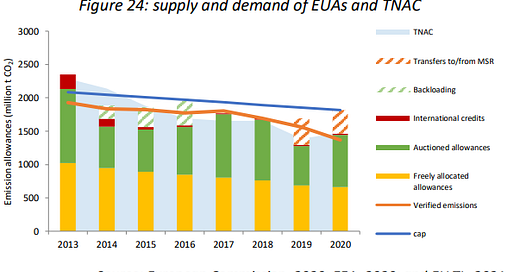In writing Carbon Risk I try and develop different ways in which investors should think about carbon markets. Quite often the basis for these frameworks are borrowed from other financial markets.
For example, thinking about carbon allowances as a currency in which trust in government commitment to net zero targets underpins everything, to the verified carbon market where the bond market offers a way of pricing the risk that a given project will deliver what it claims.
In this repost (originally published in April 2022) I look at the EU carbon market from the perspective of the precious metals market, specifically the role that stock-to-flow ratio has on the long-term pricing dynamics and what if anything we can derive for the future of the EU ETS.
Commodity markets are typically interpreted through the lens of changes in supply and demand, and the impact on inventories in any particular year.
Inventories of ‘consumable’ commodities (e.g. crude oil, wheat, etc.) typically only cover consumption demand for a few months. If there were no inventories at all, supply would have to correspond exactly to production and demand exactly to consumption.
However, if there are inventories, consumption can temporarily exceed production. Since inventories of consumable commodities are as a rule very low, their price will rise quickly in anticipation of a future supply shortage and bring consumption into balance with production.
This model works for most commodities that are consumed, but is useless to understand the value of those commodities used for investment purposes.
While the economic utility of a consumable commodity is created when it is destroyed or used up, the utility of investment commodity lies in its possession and later resale. Investors should be very careful about interpreting short term demand supply balances in the same way that they would for consumable commodities.
So how should we interpret the market for carbon allowances, and what can we learn from different types of commodities?


